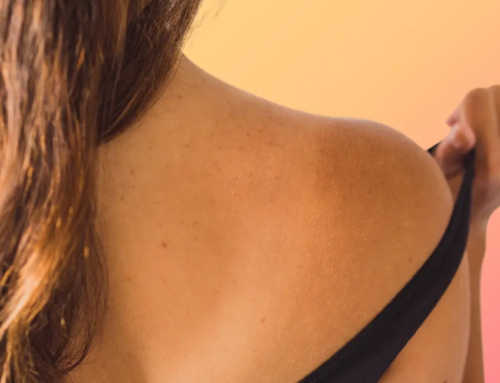Just because you’re applying an SPF50 sunscreen on your face every day doesn’t mean you’re going to get SPF50 protection. The truth is, how well your skin is defended from sun damage depends heavily on the quantity of sunscreen applied, frequency of application as well as sun exposure duration. Since research shows that most people are applying less than half the right amount, we’re here to help clear things up! Let’s take a closer look at exactly how much sunscreen you should be applying every day.
It’s all in the quantity
Apply too little and you won’t be protected from those harmful rays. Lather on too much, and your skin may look and feel greasy or you may experiencing piling or ‘Krimmeling’. So, what’s the happy medium that will keep your skin safe and ensure you’re not flying through your sunscreen products at a rapid rate?
In order to achieve the SPF labelled on a sunscreen product, you need to use 2 milligrams of sunscreen per square centimetre of skin. Now before you get out the measuring tape, you can use a general rule of thumb of applying two fingers worth (use your index and pointer fingers), or half a teaspoon, for your face AND neck. For the body, you can work on approximately the volume of a regular shot glass.
What about reapplication?
Reapplication is very important, especially when exposed to direct UV rays! Reapply every two hours when you’re exposed to direct sunlight, and more if you’re in the water.
It’s best to apply your sunscreen 15 to 20 minutes prior to going outside. Remember, you still need to apply sunscreen even if you’re staying indoors, because UVA rays can penetrate windows.
While sunscreen is a crucial part of sun protection, it’s not the only one. Don’t forget to wear a wide-brimmed hat and sun-protective clothing for added sun protection, as well as avoid peak hours of UV exposure.
SPF – how high should you go?
The amount you apply is extremely important, but so is the SPF level. SPF stands for Sun Protection Factor, and is a ratio of burn time. The number tells you how long the sun’s UV radiation would take to redden or damage your skin, while using the product exactly as directed versus the amount of time without any sunscreen. For example, with an SPF30, it would take you 30 times longer to burn than if you weren’t wearing sunscreen. We recommend using a minimum of SPF30.
Tips for choosing & applying sunscreen
- Look for “broad spectrum” on the label, which means it protects against UVA and UVB rays.
- Apply sunscreen to the parts of your body that are often missed, like the tips and back of the ears, back of the neck, around the eyes, tops of hands and feet.
- Apply sunscreen before you get dressed, to ensure you’re applying to all your exposed skin.
- Sunscreen should be the last layer you apply to your face. For example: serums and oils, moisturiser, sunscreen, and then makeup.
Looking for a lightweight, invisible sunscreen that offers maximum sun protection and leaves no white cast? SKIN functional’s SPF 50 Sunscreen has your name written all over it.




